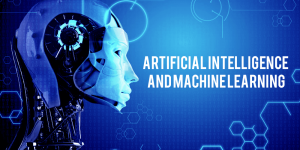
Artificial intelligence and machine learning have become extremely popular during the last ten years. This growth might be ascribed to the noteworthy progression in the extensive integration of cloud computing. These developments in technology have opened the door for the creation of remarkable artificial intelligence (AI) systems that are able to complete remarkable jobs. Every day brings new problems that stretch the limits of these autonomous systems, from AI-powered art and designs to AI-generated content created with Conversation AI systems.
Let’s discuss historically significant inventions that changed society, such as the printing press and the personal computer. Similar to how these innovations altered historical conventions, artificial intelligence (AI) is transforming society and has emerged as one of the most important areas of software development, with enormous potential for advancement and growth for companies in a variety of markets.
A Stanford study claims that over 50% of companies are interested in artificial intelligence (AI) and have successfully incorporated its capabilities into their operational frameworks. Moreover, more than 76% of them want to raise their technology expenditures for the whole year 2023. These figures show that artificial intelligence (AI) is a formidable instrument with the capacity to drastically alter industries, boost output, and propel businesses to never-before-seen levels.
Now, this article will assist you in comprehending the specifics of artificial intelligence software development if you are a corporation seeking to develop such software. We’ll examine the benefits of developing AI software for your company and also assist you in estimating the associated expenses.
Let’s first examine why AI software is worthwhile before getting into the specifics.
Create AI Software: The Step-By-Step Guide
Software development using AI is a difficult process that has to be supervised by experts. Working with an expert AI software development company like Appinventiv, which can help put things in perspective and expedite the AI software development life cycle, makes sense as a result. The following are detailed instructions for creating AI software for your company:
➽ Gathering Dataset
The first step in creating AI software is compiling a comprehensive dataset relevant to the issue. A broad variety of samples that the AI may come across in the actual world should be included in this collection. The AI model is trained and evaluated using this data as its basis.
➽ Cleansing and Labeling
In this step, the dataset is cleaned up to remove errors and missing values. The data is labeled or annotated once it has been cleaned, making sure that each object is identified with the appropriate output or category. Annotation provides AI-labeled training data and is essential to supervised learning.
Detailed Article: What is Data Annotation Tech – A Complete Guide
➽ Model Selection
After the data has been cleaned up, you should select an AI model architecture that best fits the requirements of your business challenge. For example, if you are working with structured data, a machine learning method could be the best option. Convolutional neural networks, on the other hand, may be required for AI programs that recognize images (CNN).
➽ Ingesting and Training the Model
The cleaned and annotated dataset has to be ready for training during this stage of the AI software development process. It ought to be divided into sets for testing, validation, and training. While the selected AI model’s performance is being verified on the validation set, it should be trained using the training data. To attain adequate performance, modifications must be made to the model parameters and methods.
➽ Fine Tuning of the Dataset
If the model does not perform well, it is time to improve the dataset by include more instances or addressing any issues that arose during training. The model’s ability to comprehend fresh, untested data may be improved through this iterative approach.
➽ Front End Application Development
The process of developing artificial intelligence software starts once the data has been adjusted. Creating an intuitive mobile or web application to communicate with your AI model once it has been trained is the task at hand. Using this interface, users may input data and receive predictions from the AI that are tailored to the particular features of the app.
➽ Deployment and Further Refinement
AI models for coding and front-end application should be put into a production environment once the required procedures have been completed. Users will be able to access and make use of the solution as a result. It’s critical to keep an eye on the model’s functionality and collect user input. AI models and the software may be further improved by keeping an eye on real-world use trends.
Let’s examine the many stages involved in developing AI software before delving deeper into the specifics of the expenditures related to producing a program that is comparable.
Understanding the AI Software Development Costs
The entire cost of developing AI software can range from $50,000 to $300,000, to give you an approximate sense. The complexity of the program, features that must be integrated, the location of the hired IT consulting business, the technological stack being utilized, the project delivery timetable, etc. are some of the elements that affect the cost of developing AI software.
Put simply, the most important element influencing the development budget is the total complexity of the project. For example, developing AI software with a feature list that is extremely complicated would ultimately cost more than developing software that is simpler and has the bare minimum of features and functions.
| Software Type | Development Cost Estimation | Time Frame |
| Simple | $50,000 to $90,000 | 3-6 Months |
| Medium Complex | $100,000 to $200,000 | 7-9 months |
| Most Complex | $220,000 to $300,000 | 9+ Months |
Benefits Of Artificial Intelligence Software For Businesses
AI software may be thought of as an extremely clever personal assistant.Experts predict that the market for this kind of software might grow to an astounding $2 trillion by 2030! Businesses will mostly employ AI in the next years for chatbots, AI-generated imagery, and mobile app development. These applications will help businesses make more money overall.
Large data volumes may be processed by AI algorithms with ease and speed that exceeds human speed and accuracy. AI software can help businesses understand how they sell stuff, guess what customers might do next, and even run ads without needing a human to do it all.
Let’s now examine more closely at the advantages of creating AI software for businesses below.
- Automation: AI software can help businesses save time and avoid errors by doing repetitive tasks automatically. This lets them focus on solving tougher problems that need a human touch.
- Data analysis: AI can look at lots of data really fast and give important info to people making decisions. This helps businesses see how customers behave, guess what’s going to happen next, and find chances to grow.
- Personalization: AI systems can give you advice and information that’s just for you. They look at what you like and what you’ve done before to make sure it’s useful and relevant. This raises engagement and improves consumer satisfaction.
- Efficiency: AI software makes organizations run more smoothly by improving resource allocation and simplifying procedures. Cost reductions and increased productivity across departments may result from this.
- Competitive Advantage: By using AI technology, businesses may get a competitive edge in the market. This can help them grow more quickly, offer better products and software development services, and react to the shifting needs of their clientele more swiftly.
Future Trends in AI Software Development
Even while generative AI is already popular, new developments are moving such models closer to edge devices. Making AI software for sound decision-making is made easier when intelligence approaches the data source. These models improve user experience by lowering latency and reliance on external cloud computing. Examples include creating AI for industrial process control or driverless cars.
Emerging development tools such as low-code and no-code platforms enable software engineers with diverse skill levels to participate in the creation and training of AI models. This tendency democratizes the market and increases accessibility to AI.
Wrapping Up
Artificial intelligence (AI) technology is essential for creating software that can mimic human intelligence, making deft judgments, and improving routine operations. It is gaining traction quickly across sectors, giving firms a competitive edge and better consumer satisfaction. The promise and adaptability of AI are demonstrated in a number of industries, including medical, social media, finance, and others. It creates opportunity, encourages development, and stimulates creativity.
One of the most popular developments in the IT industry at the moment is creating AI software. Businesses that provide exclusive insights are well-funded and look at methods to enhance the results of artificial intelligence. But there are still certain significant dangers that need to be handled in order to sustain effective learning, minimize ethical issues, optimize infrastructure costs, and gather pertinent data.






